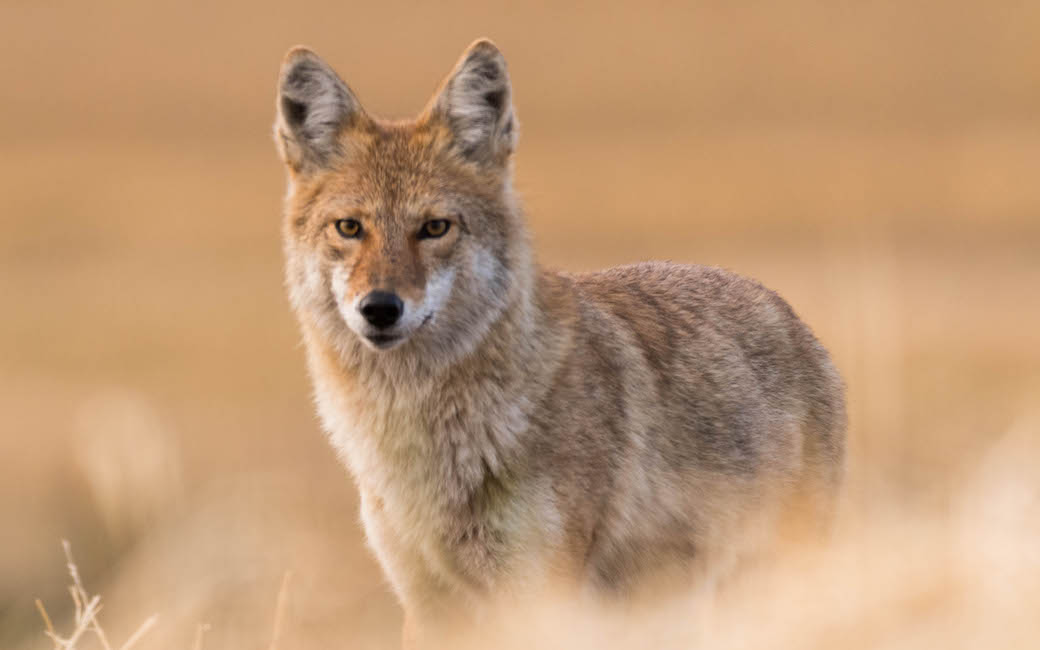Coyote 101
TU biology professor Brian Masters shares his expertise on coyotes.
By Jan Lucas on February 14, 2019

Canis latrans is here to stay, says TU’s Brian Masters. Here’s what you should know about our neighbor, the urban coyote.
It’s easy to imagine one silhouetted against a saguaro, lifting its muzzle to yip at a full moon. After all, the coyote is exclusive to the American West, right? Not anymore, says Brian Masters, professor of biological sciences and an expert on coyotes’ diet. Coyotes are now flourishing throughout the continental U.S. and Canada — even in neighborhoods near TU.
Since it’s increasingly likely that you’ll spot one, we asked Professor Masters to share his expertise on the resourceful and elusive coyote.
They’re relatively new to Maryland
Coyotes are indigenous to the American West. They began migrating east in the 19th century as settlers exterminated larger predators, particularly wolves. Coyotes have been
in Western Maryland at least since the early 1970s. They’ve moved farther south and
east during the past 20 years and can now be found all over the state. Coyote sightings
have been reported from across the Baltimore metro region.
Eastern coyotes are a genetic mix
They interbred with wolves and dogs en route to Maryland and the Eastern U.S., so
they’re larger than their west-of-the Mississippi counterparts. An adult eastern coyote
typically weighs 30-40 pounds, though much heavier specimens have been recorded.
They’ve driven out the competition
The growing coyote population forced foxes from their rural Maryland habitat and farther
into urban environments. That’s why fox sightings are common now.
They have a varied diet…
Coyotes in the wild eat plants and animals, including rodents, rabbits, opossums,
raccoons, foxes and birds. And, yes, they’ll dine on cats and smaller dogs if they get the chance. They seldom
bring down healthy, adult deer, although they will attack fawns. And, not surprisingly,
they’ll eat roadkill.
…but it’s not OK to feed them
Please don’t do anything that habituates coyotes to humans. Don’t go near them or
leave food out for them. Respect them as you would any other wild animal.
They can contract rabies
Like many other species, coyotes can contract and spread rabies. The guidelines are
the same as they are for other animals: If you see one that’s unafraid of people or
otherwise behaving strangely, alert the authorities.
We’re not their ideal meal
Coyotes very rarely attack humans. They avoid us if they can.
They’re looking for love
Coyote mating season is January through March. They’re out and about more, looking for mates. Pregnant females
will be hunting for extra calories.
All the more reason to keep Chico and Ms. Kitty safe indoors.
—
View some of Masters’ research with TU colleagues: Next-Generation DNA Sequencing of Prey Species in Coyote Scat from Prince William Forest Park and Manassas National Battlefield Park